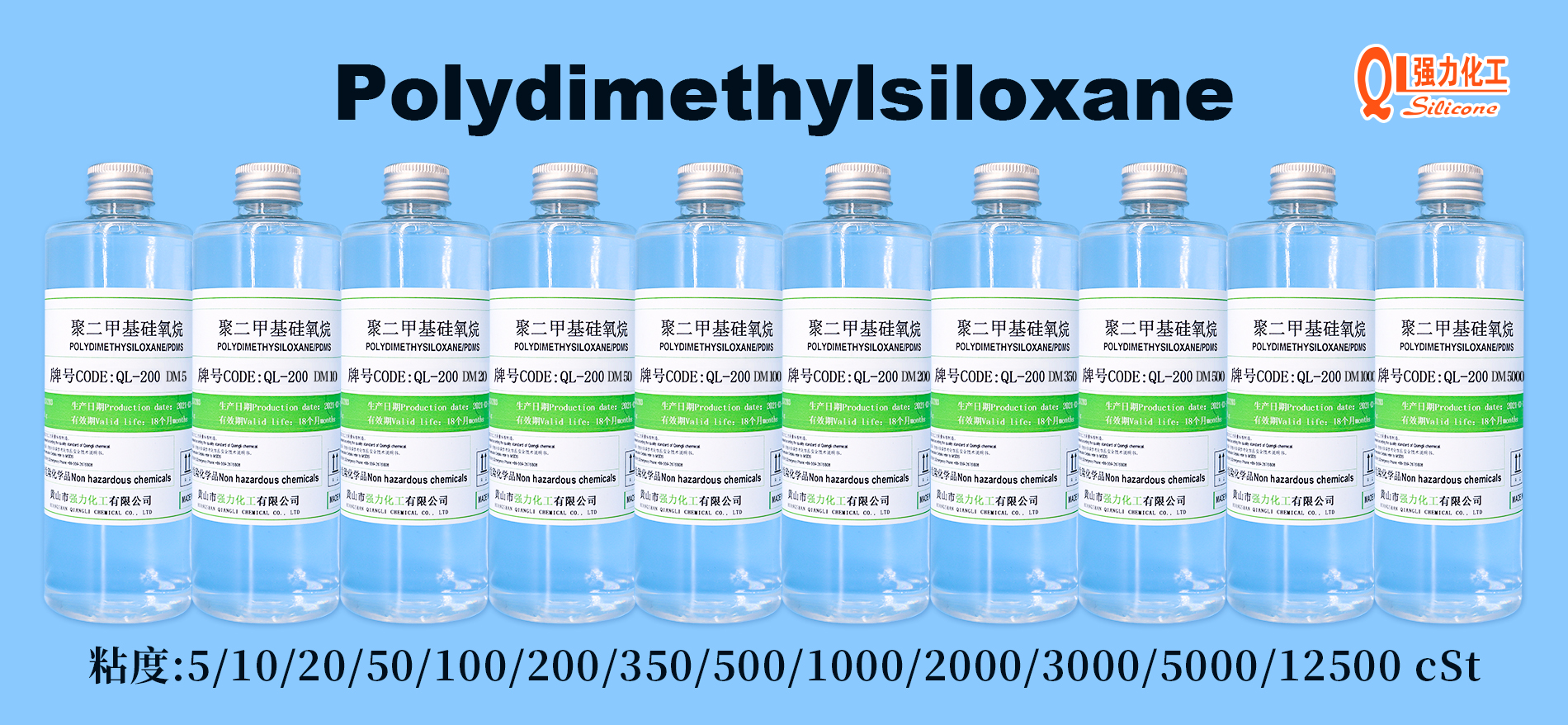If more precise recommendations are needed, please supplement specific application scenarios (such as substrate type, curing conditions, weather resistance requirements, etc.) for further optimization of viscosity selection.
When selecting dimethyl silicone oil for curing into a film with hydrophobic and degassing properties, the viscosity should be chosen by comprehensively considering factors such as film uniformity, degassing efficiency, and film layer performance. The detailed analysis and recommended solutions are as follows:
I. Influence Mechanism of Viscosity on Performance
1. Impact on Degassing Efficiency
- Low viscosity (50–200 cSt): Short molecular chains and strong fluidity mean low resistance to bubble movement in the silicone oil. Bubbles easily escape during vacuum degassing, making it suitable for scenarios requiring high degassing speed and thoroughness (e.g., electronic packaging, optical devices).
- High viscosity (500–10,000 cSt): Long molecular chains and poor fluidity trap bubbles in the system, increasing degassing difficulty. This requires longer degassing time or auxiliary heating.
2. Impact on Film Formability
- Low viscosity: Excellent spreadability during coating, forming a uniform thin coating. However, the film has weak strength and compactness, suitable for scenarios needing an ultra-thin hydrophobic layer (e.g., glass antifogging, fabric waterproofing).
- High viscosity: Forms a thick, elastic film with better friction and weather resistance. However, poor flow leveling and uneven surfaces may occur during coating (e.g., mold release coatings, sealants).
3. Impact on Hydrophobicity
-
Hydrophobicity is mainly determined by the polysiloxane molecular structure, but viscosity affects film compactness:
- Low-viscosity silicone oil has a slightly higher porosity after filming, which may enhance hydrophobic effects due to increased surface roughness (similar to the "lotus leaf effect");
- High-viscosity silicone oil forms a denser film with regular molecular arrangement, ensuring more stable contact angles.
II. Viscosity Recommendations for Different Application Scenarios
| Application Scenario | Recommended Viscosity Range | Advantage Explanation |
|---|---|---|
| Hydrophobic coating for electronic components | 50–500 cSt | Good fluidity allows penetration into fine gaps. Thorough degassing avoids bubbles affecting insulation, and the thin film does not hinder component heat dissipation. |
| Anti-fog treatment for optical lenses | 100–300 cSt | Low viscosity ensures high light transmittance. Degassed film has no impurities, and the uniform hydrophobic layer does not affect optical performance. |
| Mold release agents | 500–2,000 cSt | High viscosity forms a thick, wear-resistant film. The stable degassed film can be reused multiple times. |
| Waterproof sealants | 1,000–10,000 cSt | High viscosity provides sufficient cohesive force. The elastic film after degassing has no bubbles, ensuring sealing performance and hydrophobicity to prevent water vapor penetration. |
| Fabric waterproof finishing | 50–200 cSt | Low viscosity easily penetrates fiber gaps. The degassed coating is light and breathable, with durable hydrophobicity that does not affect fabric softness. |
III. Adjustment Strategies for Special Requirements
1. Balancing Degassing and Film Strength
- Solution: Mix low-viscosity (e.g., 100 cSt) and high-viscosity (e.g., 1,000 cSt) silicone oils (ratio 1:1–3:1) to ensure degassing efficiency and improve film toughness.
- Example: In electronic potting adhesives, mixing 200 cSt and 1,000 cSt at a 2:1 ratio shortens degassing time to 1/3 of that for pure high-viscosity silicone oil, while increasing film tear strength by 40%.
2. Viscosity Selection for High-Temperature Environments
- At high temperatures (>150°C), the viscosity of silicone oil decreases. It is recommended to choose models with higher room-temperature viscosity (e.g., 500–1,000 cSt) to avoid sagging or thinning of the film due to viscosity reduction during high-temperature filming.
3. Rapid Curing Scenarios
- Low-viscosity silicone oil (<200 cSt) diffuses faster with curing agents, reducing curing time to 1/2 that of high-viscosity silicone oil. However, ensure that the bubble escape rate matches the curing rate (to avoid bubble residue).
IV. Precautions
-
Degassing Process Matching:
- Low-viscosity silicone oil can be degassed at room temperature under vacuum (-0.1 MPa) for 10–30 minutes;
- High-viscosity silicone oil is recommended to be degassed at 50–80°C for 1–2 hours.
-
Curing Agent Matching:
- In hydrogen-containing silicone oil curing systems, the hydrogen content of low-viscosity silicone oil should be controlled (0.1%–0.3%) to avoid excessive crosslinking causing film brittleness; high-viscosity silicone oil can increase hydrogen content (0.5%–1%) to enhance crosslink density.
-
Surface Treatment:
- The substrate surface must be clean and dry. Low-viscosity silicone oil can be sprayed directly, while high-viscosity silicone oil is recommended to be diluted with toluene or xylene (10%–30% diluent) to improve flow leveling. The diluent should be volatilized before degassing.
-
-




